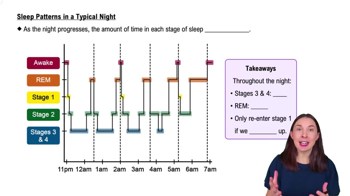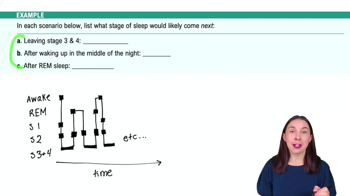Table of contents
- 1. Introduction to Psychology1h 43m
- 2. Psychology Research2h 20m
- 3. Biological Psychology2h 41m
- 4. Sensation and Perception28m
- 5. Consciousness and Sleep32m
- 6. Learning41m
- 7. Memory34m
- 8. Cognition37m
- 9. Emotion and Motivation35m
- 10. Developmental Psychology33m
- 11. Personality48m
- 12. Social Psychology41m
- 13. Stress and Health41m
- 14. Psychological Disorders44m
- 15. Treatment47m
5. Consciousness and Sleep
Sleep
Struggling with Psychology?
Join thousands of students who trust us to help them ace their exams!Watch the first videoMultiple Choice
Methamphetamine is an example of a
A
depressant.
B
narcotic.
C
stimulant.
D
hallucinogen.
 Verified step by step guidance
Verified step by step guidance1
Understand the definition of each category: Depressants slow down the function of the central nervous system, narcotics are drugs that relieve pain and induce sleep, stimulants increase the activity of the central nervous system, and hallucinogens cause altered perceptions and feelings.
Identify the primary effects of methamphetamine: It increases alertness, concentration, and energy, and can elevate mood.
Match the effects of methamphetamine with the definitions of each category: The effects of increased alertness and energy align with the characteristics of stimulants.
Consider the physiological impact: Methamphetamine increases the release of dopamine in the brain, which is a typical action of stimulants.
Conclude that methamphetamine is classified as a stimulant based on its effects and mechanism of action.

 3:25m
3:25mWatch next
Master Circadian Rhythms with a bite sized video explanation from Hannah Gordils
Start learningRelated Videos
Related Practice


































































































![Race, Genes and IQ Differences | Bret Weinstein [Mini Clip]](https://img.youtube.com/vi/IztL_m3pd70/mqdefault.jpg)



































































































